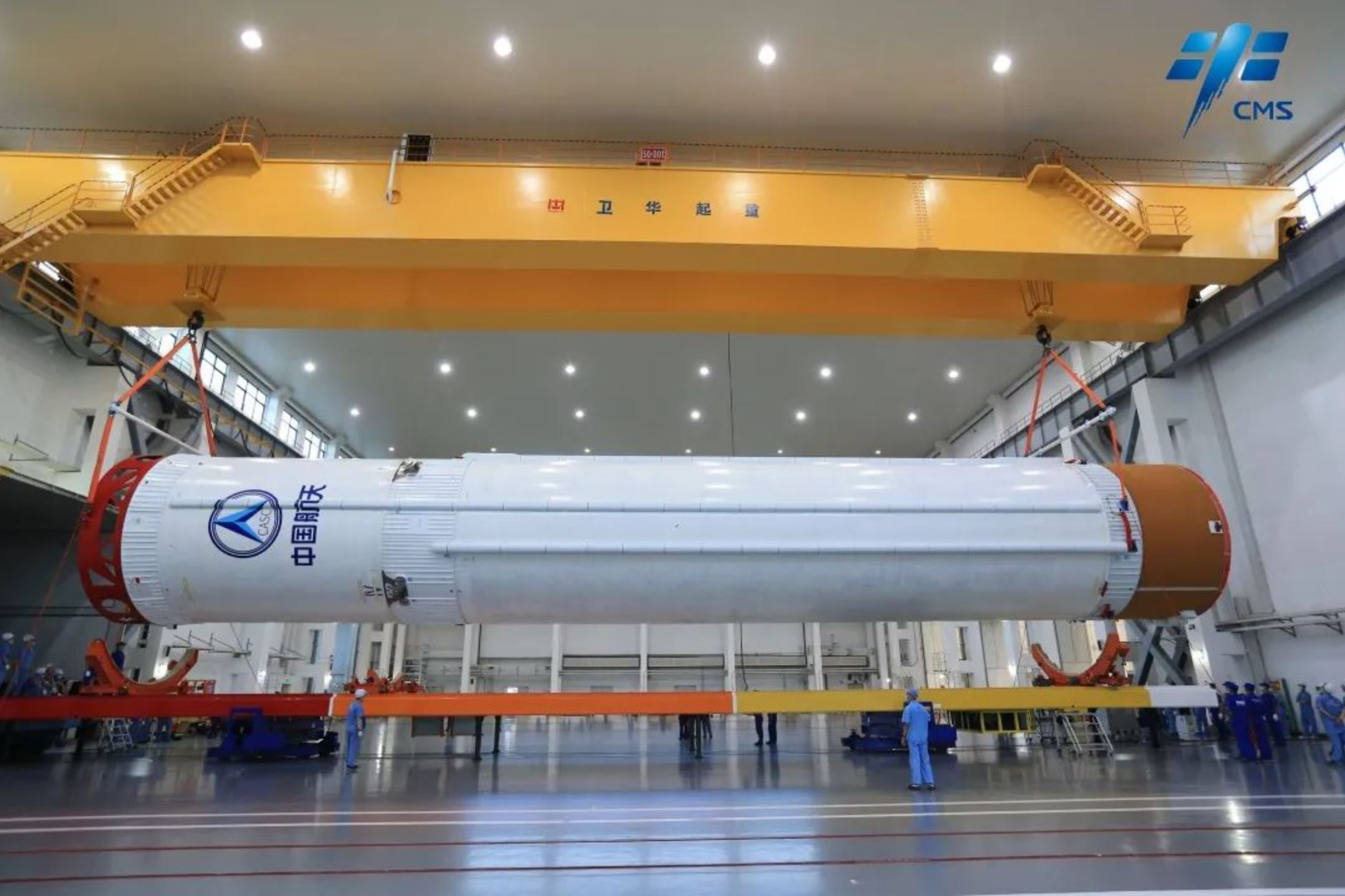HELSINKI — Work to assemble a Long March 5B heavy-lift rocket is underway at Wenchang spaceport as China prepares to complete the construction of its Tiangong space station.
Components of the 849-metric-ton Long March 5B rocket were recently delivered to Wenchang, the China Manned Space Agency (CMSA) announced Sept. 3.
The rocket is now being prepared for an early October launch of the 17.9-meter-long, 4.2-meter-diameter and 22-ton Mengtian (“dreaming of the heavens”) experiment module.
Mengtian will join two earlier modules—the Tianhe core module and Wentian experiment module—in orbit to complete the T-shaped Tiangong space station.
China intends to keep the space station permanently inhabited for at least a decade, gaining human spaceflight experience, conducting a range of experiments and potentially exploring commercial possibilities.
Mengtian will be China’s third module launch in 18 months, following the launch of Tianhe in April 2021 and Wentian in July this year. China had earlier intended to launch Tianhe in 2018, but a Long March 5 launch failure in July 2017 and subsequent engine issues delayed the project.
Components of the fourth Long March 5B rocket were delivered to Qinglan port near Wenchang on Hainan island in early September by the purpose-built Yuanwang 21 and 22 cargo ships.
The five-meter-diameter rocket was manufactured and tested in the northern port city of Tianjin before being shipped south.
The launch is also expected to see the first stage of the Long March 5B enter orbit. The previous three Long March 5B launches have resulted in high-profile and controversial uncontrolled reentries of the roughly 22 metric ton core stages.
Mengtian was also shipped from Tianjin and arrived at Wenchang Aug. 9. The new module will see Tiangong expand to a living and working space of around 110 cubic meters. It will also provide greater power generation with another pair of 30-meter-long solar arrays like those on Wentian.
The module will host science racks for conducting experiments in microgravity, with areas of research including fluid physics, combustion and materials science and space technologies.
It also has a payload airlock which will allow the small, 5.2-meter-long robotic arm launched with the Wentian module to grasp science experiments and install them on payload adapters
Mengtian will be greeted in orbit by the three members of the Shenzhou-14 mission crew. Commander Chen Dong and crew mate Liu Yang on Thursday completed their first extravehicular activity, using the new Wentian airlock.
At 1109 UTC today Chen Dong and Liu Yang began the first Shenzhou-14 spacewalk, exiting the Wentian airlock. https://t.co/HpaqrqALGw pic.twitter.com/HteFEw6S2c
— Andrew Jones (@AJ_FI) September 1, 2022
The Wentian module is currently docked at the forward port of the Tianhe docking hub. It will be transpositioned to a lateral port ahead of the arrival of Mengtian. The new module will also later be moved, completing the T-shaped space station.
The Shenzhou-14 crew are also scheduled to welcome the Shenzhou-15 crew aboard Tiangong late in the year, marking China’s first crew handover.
The Xuntian optical module, a co-orbiting, Hubble-class space survey telescope, is planned for launch in 2024. Xuntian will be capable of docking with the CSS for maintenance and repairs.
The space station itself could also be expanded from three to six modules, according to Chinese space officials. Such an expansion may depend upon other countries joining the project.
